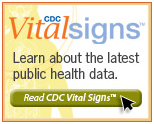Volume 8, No. 6 December 13, 2012

In Brief...
Prior Issues...
- 2008
- 2007
- 2006
- 2005
- 2014
- 2013
- 2012
- 2011
- 2010
- 2009
PDF Archives
- 2000
- 1999
- 1998
- CC Bulletin Supplements
- 2005
- 2004
- 2003
- 2002
- 2001
November/December 2012 issue of Public Health Reports Online
The November/December 2012 issue of Public Health Reports (www.publichealthreports.org)
is now available online. PHR is the official journal of the US Public Health Service and the Office of the Surgeon General and publishes original research on preventing and eliminating disease and injury. Here’s what’s inside this issue of Public Health Reports:
- Did you know that heart disease and stroke kill more than 800,000 Americans annually? Dr. Regina Benjamin describes Million Hearts™, an initiative started in 2011 by the U.S. Department of Health and Human Services and a number of public and private partners to prevent one million heart attacks and strokes by 2017. PHR has been reporting on infectious diseases since its inception in 1878. Through the years, our focus has shifted from the now mostly eradicated “communicable” diseases of the day, such as cholera and typhoid, to modern-day infectious diseases, such as HIV/AIDS, as well as historically difficult diseases such as hepatitis, which still present public health challenges despite significant progress.
- As we celebrate World AIDS Day on December 1, we are closer than ever before to seeing an AIDS-free generation. But it can’t happen with science alone. Dr. Ronald Valdiserri stresses the importance of “implementation science”— ensuring that research findings and evidence-based interventions are actually integrated into health-care policy and practice—in achieving an AIDS-free generation.
- It’s impossible to predict when the next influenza pandemic will occur or what its severity will be. And while vaccination is certainly a critical method of preventing such outbreaks, non-pharmaceutical efforts can be just as important in minimizing the spread of disease. In this issue, Barrios et al. describe lessons learned from the 2009 H1N1 pandemic and present a framework for selecting non-pharmaceutical strategies to minimize disease spread during such a pandemic.
- Evidence-based decision-making has become a global standard for health interventions, policy, and programs. In this issue, Baral and colleagues describe how practitioners and policy makers alike can take an evidence-based approach to better evaluate prevention interventions targeting populations most at risk for HIV.
- Since the introduction of the varicella vaccine in the 1990s, full-blown chicken pox—a once ubiquitous childhood disease—is becoming so uncommon that breakthrough cases are often mistaken for other conditions. In this issue, Daskalaki and colleagues examine testing practices and conclude that as the disease continues to become less prevalent, laboratory confirmation is critical to avoid potential school outbreaks.
- Surveillance is the foundation for all public health actions, not only to measure the burden of disease, but also to identify and control outbreaks and facilitate targeted vaccination and other prevention initiatives. Focusing on the surveillance of acute hepatitis, Iqbal et al. demonstrate that while there have been successes with the implementation of electronic reporting, providing adequate resources for such surveillance improves the quality of surveillance data overall.
- The past several years have witnessed an increased consumer demand for “whole,” locally grown and produced foods. And while only 3% of the U.S. population drinks raw—or unpasteurized—milk, heated debate has evolved between public health officials and consumers regarding its sale. David examines the controversy and the implications of two federal court decisions on the enforcement of safe consumption.
- In this issue’s NCHS Dataline column, Smith shares the latest reports from the National Center for Health Statistics, including the relationship between socioeconomic status and health, stroke hospitalizations trends, and key indicators for oral health.



